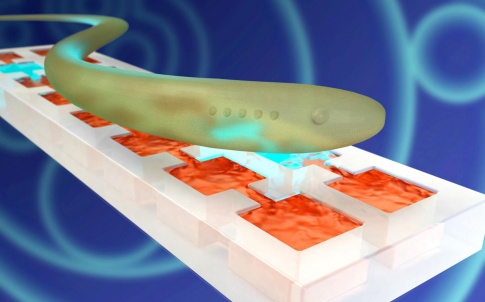
Working with funding from the US Army Research Office, the group, from Brandeis University in Massachusetts, claims that the breakthrough could lead to the development of autonomous soft robots with highly distributed and tightly integrated sensing, actuation, computation and control. The research is published in the UK journal Lab on a Chip
Led by Professor of Physics Dr Seth Fraden, the team drew their inspiration from the sinuous swimming motion of a swimming blue eel and studied how a type of neural network present in the eel, named the Central Pattern Generator (CPG), produces waves of chemical pulses that propagate down the eel's spine to rhythmically drive swimming muscles.
Fraden's lab set about engineering a material that could mimic this generator by first constructing a control device that produces the same neural activation patterns biologists have observed. There, they created a control system that runs on chemical power, as is done in biology, without resorting to any computer or electromechanical devices.
The team realised that the same CPG dynamics could be captured on a non-biological platform if they used an oscillating chemical process known as the Belousov-Zhabotinsky reaction. The chemical networks they produced exhibited dynamic patterns identical to the eel's CGP.
The team is now looking at transferring the information coded in the dynamic patterns from the chemical networks to create a targeted mechanical response within a novel chemo-mechanical gel. This could transition the research from artificial material mimicking neural tissue to artificial tissue now mimicking neuromuscular tissue.




Report highlights significant impact of manufacturing on UK economy
Note to Evil Villain/Dave 2020. Thatcher was PM for _11_ years, from 1979 to 1990 so no one under the age of 34 was even born when she left office....